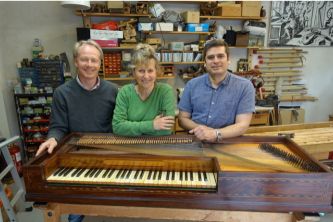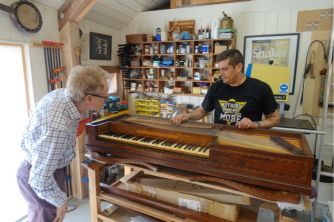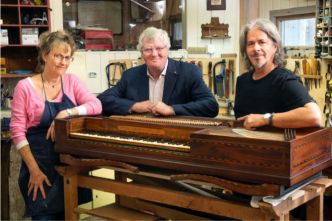Annual Address 2023
The restoration of the 1780 Frederick Beck square fortepiano
The background and a short history of the piano
Cezar Hernandez
Piano restorer
We can imagine that an enterprise like the First Fleet would have involved hours and hours of planning, choosing carefully what should be taken there or not. A square piano made it into the list, brought by the surgeon George Worgan on board the Sirius, and one can only wonder why a bulky instrument was necessary in such an adventurous enterprise. George Worgan was the son of John Worgan, an accomplished musician who was a performer, teacher and composer. Possibly, Captain Phillip would have agreed to include the piano, as it not only would help to fulfil the entertainment needs of the new colony, but also the religious ones by using it during services. Unfortunately, in the cargo list, there is no information about the maker of the piano nor any other useful information to confirm its identity.
As we know, the last quarter of the 18th century in Europe saw many developments and changes in very different areas. One of those was the improvement in the piano making that flourished in London. By the mid 1780s many piano makers were fully established and they were offering a smaller instrument than the usual harpsichord: the square piano. Soon it started to be the favourite entertainment in many households and being ubiquitous, displacing the mentioned harpsichord and the spinet, and its sales to many different parts of the globe are recorded. English pianos were exported to America, India, China and to the rest of Europe, including Paris and Vienna, the other two centres of piano making in the world.
Here I want to mention the extensive research carried out by Geoffrey Lancaster and detailed in his book THE FIRST FLEET PIANO, A Musician's View, published a few years ago. There he proposed a square piano made by Frederick Beck in 1780 to be a reasonable candidate for being the piano brought on board the first fleet. Though, there is no irrefutable proof that the 1780 Beck is the piano that came on board the Sirius, but significant evidence points towards a strong possibility that it is so. We are aware that there is another candidate for the title of the first piano to arrive in Australia, but so far, there is no proof to substantiate that, only that the owner claims the exactly same fascinating story as in the 1780 Beck: that it was found in the laundry room of a farm house near Parramata. The oral tradition in that house said: "Be careful...this piano came with the First Fleet".
There is a contemporary account from a member of the crew of the First Fleet about the piano being used to offer a performance during dinner in a stop in Rio de Janeiro during its initial trip. We can imagine there were very few opportunities to play the instrument on board, as the movements of those ships are significant. He describes the piano as a very fine instrument.
Eventually, the fleet arrived at Botany Bay on January 19th, 1788, and later on moved to Sydney Cove, as we know. After a couple of years of being in Australia, the piano was given to Elizabeth Macarthur. She learnt to play it and had it for 17 years, and then it changed hands several times, and eventually fell into oblivion until the mid 1960's, when reportedly resurrected in order to be cashed for some money to buy a washing machine. The buyer was the antique dealer William Bradshaw, who heard that someone was selling a 'spinet' in an old farmhouse in the outskirts of Windsor. He acquired and possessed it for some years until it was sold to the fortepiano collector Stewart Symonds, who in turn, after some years donated it to the Western Australia Academy for Performing Arts (known as WAAPA).
The restoration
The WAAPA decided a few years ago that the piano should be restored by specialists in English fortepianos. Thus, the piano made its way in 2019 to very near the place where it was born, with Lucy Coad and her team chosen as the restorers for the enormous task of bringing it back to fully playing conditions, and to record with all detail the intervention performed.
When I was invited by Lucy to participate in the restoration and to co-write the report, I felt that it was my lucky day. I was trained by her for a couple of years, previously, specialising in the restoration of square pianos. You can imagine my excitement by looking and touching the piano for the first time, even though it was in very poor playable conditions. We wondered if the piano hid any revealing information. Square pianos have an acoustic chamber where all the sound come from, and by design, it is an almost enclosed wooden box that acts as a resonator. In some occasions, during a restoration we find all sorts of objects trapped inside – like coins or even personal letters hidden by past owners – sometimes inscriptions are found that can be revealing of the history of the piano. With the piano at the workshop, we proceeded to remove the soundboard which is the thin wooden board that reproduces the vibrations of the strings in the said acoustic box (we actually took the piano down to pieces). That removal process takes a few days in order to dissolve the glue, and when we finished, we all were almost panting of curiosity ('what's is there…?), we had cameras in our hands and smartphones recording, so we finally removed the soundboard, and then inside we found … nothing! It was fully empty, no inscriptions, no nothing. But once we were recovered from the disappointment, we started to look at not-so obvious evidence, and that was interesting. The piano was repaired by a skilful cabinet maker, most probably in the nineteenth century, something that would not have happened to an ordinary instrument, I think. And another restoration, this one from the twentieth century, was also visible. I noticed that some parts were replaced trying to carefully copy the original. I believe that if the piano was not considered by previous generations the first one to arrive in Australia, it would not have received such a treatment during these two restorations, as I know from examples of similar pianos that do not have any historic value.
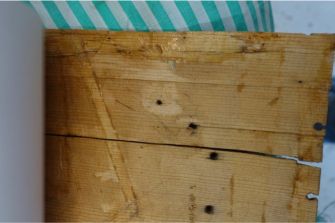
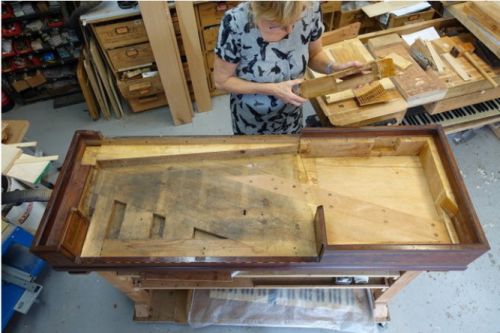
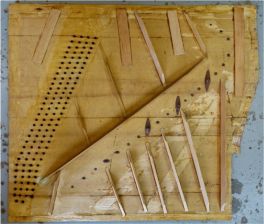
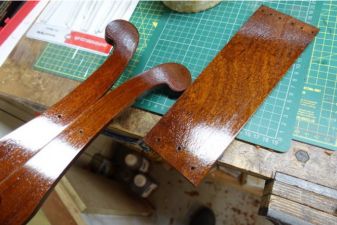
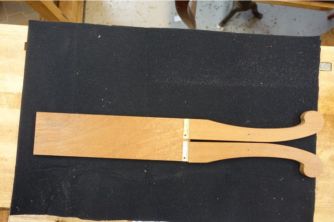
Unfortunately, there are no records to fully trace the provenance of the piano, but in a way, I have the feeling that it anyway embodies many of the values of the time that are still present in us, specifically the love to music. It is remarkable that such a piano survived until today, and that it can be played again.
Thankfully, for our generation and the ones to come, this piano now has the attention that it deserves, and very soon is going to make its final trip back to Australia, fully restored, and in the ideal context where it could be heard, researched, and cherished. I am sure that all of you would like to hear it, but let me tell you that the piano is going to arrive soon back in Australia, where my friend and colleague Paul Tunzi has been preparing the big moment for its return. He has been doing a doctoral research on the technical side of the instrument, and Geoffrey Lancaster preparing the first public performance after so many years. I think they deserve the privilege to first play and hear the piano after all the work they have done. We are happy to have contributed to it and it seems to me that it is the perfect occasion to celebrate the links between Britain and Australia.
As a restorer, I focus on the possibilities that the instrument can offer again after almost two and a half centuries, and to take actions today that will help to ensure that it can still be enjoyed in a distant future. One can imagine the occasions when this little piano provided spiritual comfort during religious services, and joy during celebrations, and where people fulfilled their artistic needs in a place where there was no other way to do it. This piano is a link to the past, and hopefully will continue to be in the future, helping to preserve the memories of the brave people who ventured into a then almost unknown land, which today has proved to be a great nation.
